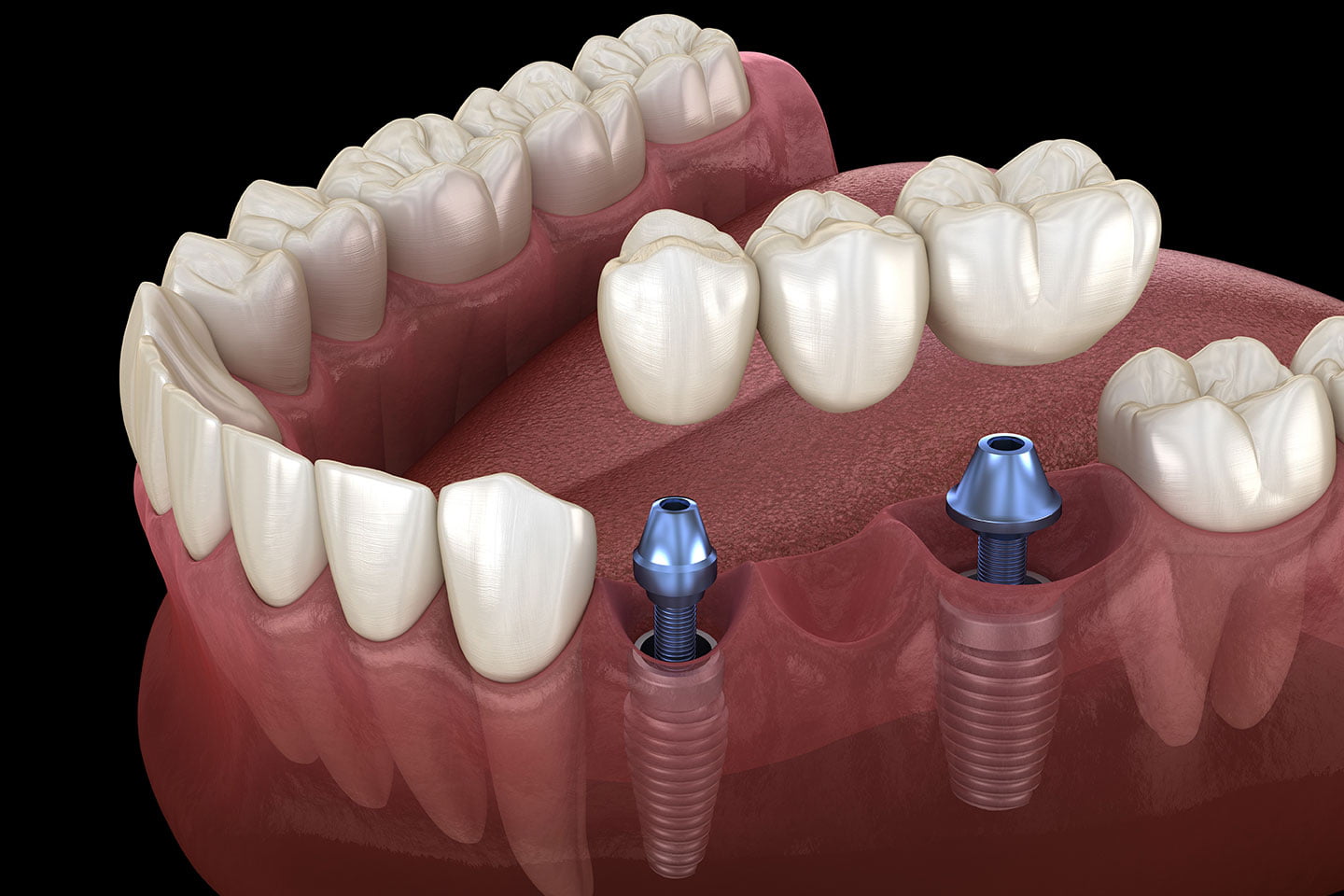Missing a tooth or several teeth impacts more than your self-esteem alone. It can affect the way you chew and speak, other teeth can start shifting, and you may even notice a change in the shape of your face due to lack of circulation to your jaw from the tooth’s root. The best solutions for this are typically a dental implant or a dental bridge, depending on a variety of factors.
It’s not uncommon to be missing a tooth, either. 69% of adults ages 35-44 have at least one permanent tooth missing. The cause can vary from injuries to poor oral hygiene. Thankfully, our advances in dental care allow you to have a few choices when it comes to your restoration process.
Read on to learn more about how to choose between a dental bridge or dental implant when you’ve experienced one or more missing teeth.
How to Choose Between Dental Bridges and Implants
If you aren’t sure what a dental bridge or dental implant does, that is an excellent place to start. A dental implant may not make sense for you if you have several teeth in a row missing that you’d like restored. Let’s start with the basics about what each option looks like.
What is a dental bridge?
If you’ve lost one or more teeth, a dental bridge can be used to fill in the gaps. If you have several teeth that are missing in a row, you simply need one dental bridge. It works just like the name implies, bridging the gap by fitting onto two adjacent healthy teeth that will end up supporting the bridge and a false tooth that fits in the gap.
Most dental bridges are made of porcelain, metal, or ceramic materials.
What is a dental implant?
Dental implants work to replace the roots when you’re missing a tooth. You’ll have titanium posts surgically inserted into the jawbone. The benefit of this is that new bone will eventually grow around the implant to support your jaw. Once you’ve fully healed from the implant surgery, you’ll be ready for the artificial tooth attachment.
Dental Bridges vs Dental Implants: Pros and Cons
When choosing your dental implant or a dental bridge, there are several considerations you and your dentist will have to go over it. Cost, longevity, appearance, the process, and how many teeth you’re missing all play a part. While you’re weighing your options, these are the pros and cons of each restoration option.
Pros of dental bridges
- They are often covered by insurance.
- You don’t have to undergo surgery.
- They have lower upfront costs.
- Your recovery time is minimal.
- They can replace multiple adjacent teeth.
- It’s typically complete after just two dentist visits
Cons of dental bridges
- Dental bridges can last 10-15 years but sometimes have to be replaced in around 5-7 years.
- As your dental bridges age, they may have a less-natural appearance.
- The healthy teeth adjacent to the missing tooth must be adjusted.
- Food debris can get stuck under the tooth. You can sometimes combat this with water picks to avoid gum infections.
- You have to be more cautious about brushing and flossing.
Pros of dental implants
- They are the longest-lasting option, around 15-20 years or longer.
- They retain their natural-looking appearance over time.
- They don’t affect adjacent teeth.
- A dental implant feels the most like a natural tooth.
- You can brush and floss your implant like you would your other teeth.
Cons of dental implants
- It is a higher initial financial investment.
- The process is longer than bridges and can take up to six months as you wait for the implant to fully heal before getting your artificial tooth.
As you can see, each process has several pros and cons. What will help you decide are the following factors:
Investment: Implants are a bigger investment short term but longer term are a better investment.
Number of missing teeth: A bridge generally can only be considered if there is a tooth on either side of the missing tooth. Implants do not necessarily have to replace each missing tooth but can support dentures, be bridged to replace multiple missing teeth.
Overall health: If you’re considering a dental implant, you’ll need to undergo minor surgery. If you have a medical condition that slows down healing, such as leukemia or autoimmune disease, you may be a better candidate for a dental bridge instead.
When you have one or more missing teeth, it can be discouraging. You may be attempting to hide your smile, chew on one side, or notice it’s harder to say certain words. A dental implant or dental bridge can give you the confident smile you’ve always wanted while also supporting other everyday functions. Are you ready to book your restorative appointment? Contact our office – we’re excited to meet you!
Have you ever experienced a missing tooth or several teeth? Did you explore your options? What did you end up doing? Share your experience with our readers in the comments below.






Leave A Comment